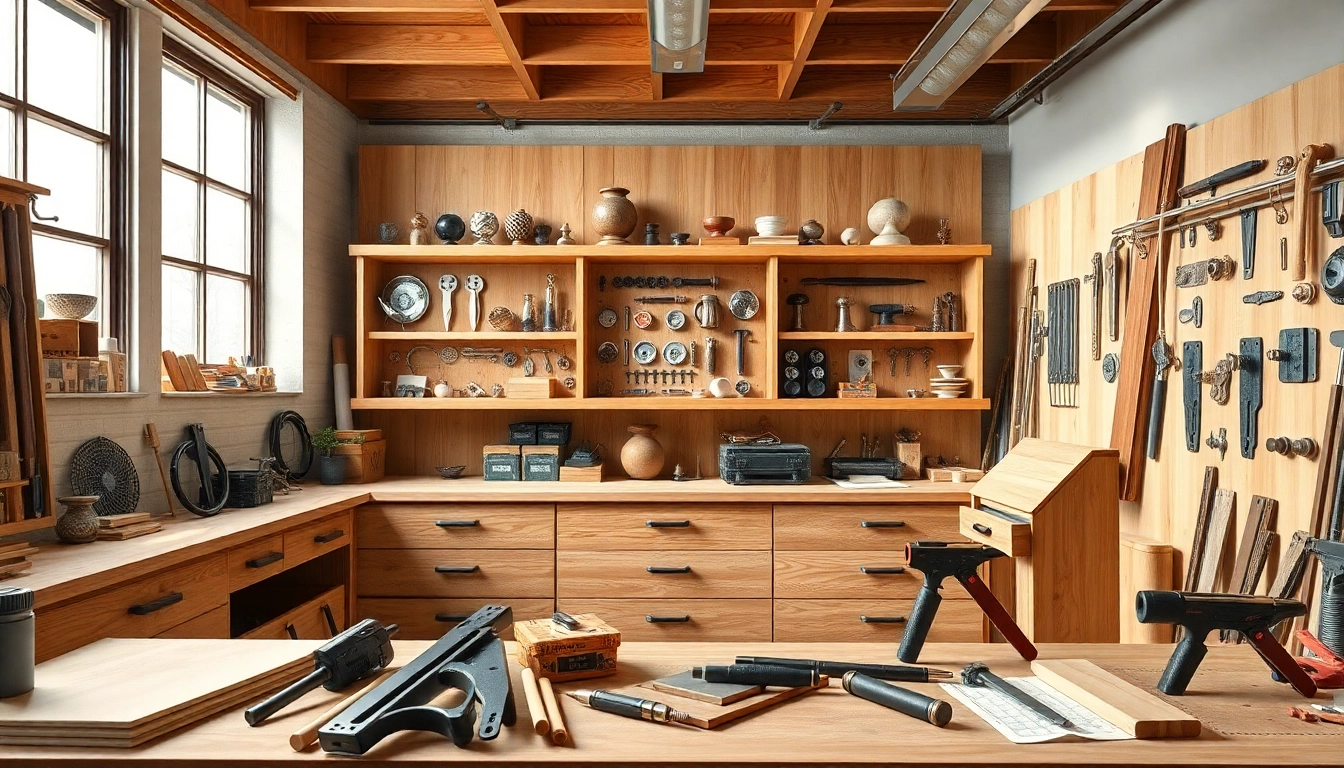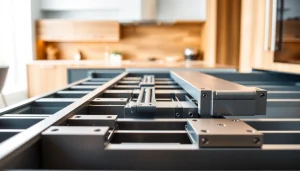Understanding Furniture Hardware Manufacturers
When embarking on a furniture project, the hardware you choose plays a pivotal role in the overall functionality and aesthetic appeal of the final product. Furniture hardware manufacturers are essential partners in the design and production of furniture, ensuring that the components used not only meet design specifications but also adhere to quality standards that enhance longevity and performance.
What is Furniture Hardware?
Furniture hardware encompasses a wide range of components essential for the assembly, operation, and aesthetic of furniture products. This includes hinges, drawer slides, knobs, handles, locks, brackets, and various other functional and decorative elements. Such hardware is crucial for the practical operation of furniture elements, like opening drawers or supporting a cabinet’s structure, while also contributing to the overall design ethos of a piece.
Role of Manufacturers in Quality Control
Quality control is paramount in the furniture hardware manufacturing process. Manufacturers implement strict testing measures to ensure that all hardware meets specified standards for durability and functionality. For instance, hinges must be tested for weight tolerance, while drawer slides should be assessed for smooth operation over time. Especially in a competitive market, the reputation of a manufacturer can hinge on their commitment to quality, which can affect purchasing decisions for customers and businesses alike.
Importance of Material Selection
The materials used in furniture hardware production are critical. Common materials include metals like stainless steel and brass, which offer strength and corrosion resistance, as well as plastics, which can provide a lightweight and cost-effective alternative. The choice of material can significantly affect hardware durability, appearance, and maintenance. For instance, stainless steel is ideal for outdoor furniture due to its resistance to rust, while painted aluminum might be chosen for its weight and aesthetic versatility indoors.
Types of Furniture Hardware Products
Commonly Used Hardware in Furniture Manufacturing
The furniture manufacturing process utilizes various hardware components tailored to specific functionalities. Some of the most common types include:
- Hinges: These are essential for doors and lids, allowing for pivoting movement. They come in various types, like concealed or pivot hinges, depending on aesthetic and functional needs.
- Drawer Slides: These components enable smooth opening and closing of drawers. Options include side-mounted, under-mount, and ball-bearing slides.
- Knobs and Pulls: Not only functional, these hardware pieces are crucial for design, allowing users to engage with doors and drawers.
- Fasteners: Screws, nuts, and bolts connect different furniture components, ensuring structural integrity.
- Furniture Legs: These provide support and can vary from simple designs to intricately crafted legs that enhance visual interest.
Innovative Designs from Leading Manufacturers
In a market where aesthetic appeal is as significant as functionality, leading furniture hardware manufacturers are continuously innovating their designs. For instance, companies like Top Knobs and Amerock have released collections showcasing hardware not just as functional components but as integral design features. This trend prioritizes aesthetic diversity, offering everything from sleek modern designs to ornate, vintage-inspired pieces that cater to varied consumer tastes.
Customization Options Available
Many manufacturers now offer customizable hardware options, allowing customers to select finishes, sizes, and design elements that reflect their unique style and functional needs. Customization can range from the choice of material and color to the shape of handles and locks. This flexibility has become increasingly popular in the market, catering to designer specifications and enhancing the appeal of bespoke furniture projects.
Key Players in the Furniture Hardware Industry
Profiles of Top Manufacturers
The furniture hardware industry features several prominent players, each offering unique products and catering to different segments of the market.
- Top Knobs: Renowned for its exquisite collection of knobs and pulls, Top Knobs offers an extensive range of designs that appeal to both contemporary and traditional tastes.
- Rockler: A comprehensive supplier for woodworking hardware, Rockler provides everything from drawer slides to cabinet hardware, emphasizing quality and variety.
- Furnica: They provide a vast array of furniture hardware options and are known for their innovative solutions tailored to both industrial and DIY markets.
- Richelieu: As a market leader, Richelieu specializes in specialty hardware solutions and emphasizes design-forward products.
- Häfele: They manufacture a variety of solutions for furniture and architectural fittings, combining functionality with advanced design.
Comparative Analysis of Their Offerings
Each of these manufacturers has carved out a niche within the furniture hardware landscape, creating an array of products that emphasize different features. For instance, while Top Knobs focuses primarily on decorative hardware, Rockler excels in practical solutions for woodworking needs. Comparing their offerings involves looking at pricing, design variety, material quality, and customization options, which allows potential buyers to choose the best fit for their projects.
Market Trends Influencing Manufacturer Choices
The market for furniture hardware is continually evolving, influenced by changing consumer preferences, sustainability, and technological advancements. Current trends suggest that manufacturers are leaning towards eco-friendly materials and manufacturing processes, as well as smart furniture technologies that integrate hardware with electronic functionalities. Additionally, the rise of online marketplaces has transformed how consumers purchase hardware, placing a greater emphasis on product information and consumer reviews.
Best Practices for Selecting Hardware
Determining the Right Hardware for Specific Projects
Selecting the right hardware is crucial for ensuring functionality and durability in furniture design. Consider the following best practices:
- Analyze the furniture’s purpose: Understand how the piece will be used to determine the necessary hardware type (e.g., heavy-duty hinges for frequently used doors).
- Evaluate design aesthetics: Choose hardware that complements the overall style of the furniture.
- Assess weight and size: Ensure that the hardware can handle the expected load without warping or failure.
Evaluating Manufacturer Reputation and Support
It’s essential to select manufacturers with a reputation for quality and reliable customer support. Researching reviews, asking for references, and inquiring about warranties can provide insight into a manufacturer’s reliability. Additionally, strong customer support can facilitate smoother projects, especially when issues arise during assembly or installation.
Cost-Effectiveness and Longevity Considerations
Cost considerations are always top-of-mind when selecting hardware. However, it’s crucial to weigh the initial costs against the longevity and reliability of the materials. Investing in high-quality, durable hardware may prove to be more cost-effective in the long run by reducing replacement and repair costs, enhancing the furniture’s lifespan, and improving its overall appeal.
Future Trends in Furniture Hardware Manufacturing
Sustainable Practices in Hardware Manufacturing
The trend toward sustainability is increasingly influencing the furniture hardware industry. Manufacturers are adopting green practices by sourcing recyclable materials and minimizing waste in production processes. Additionally, eco-friendly finishes and coatings are becoming more commonplace, addressing consumer demand for environmentally responsible products. This shift not only appeals to eco-conscious consumers but also prepares manufacturers to comply with emerging regulations regarding sustainability.
Emerging Technologies and Innovations
As technology continues to advance, so does the integration of smart features into furniture hardware. IoT (Internet of Things) capabilities are beginning to be seen in locks and control systems, allowing users to manage their furniture with mobile applications. Innovations like soft-close mechanisms and push-open drawer systems enhance user experience and streamline functionality within furniture design.
Consumer Preferences Shaping the Future
As consumer tastes evolve, they increasingly seek personalization and unique designs. This growing desire for customization has prompted manufacturers to offer modular and configurable hardware solutions. The furniture industry is moving toward manufacturing that not only meets functional needs but also reflects the individual style and preferences of consumers, thus driving innovation in designs and product offerings.








